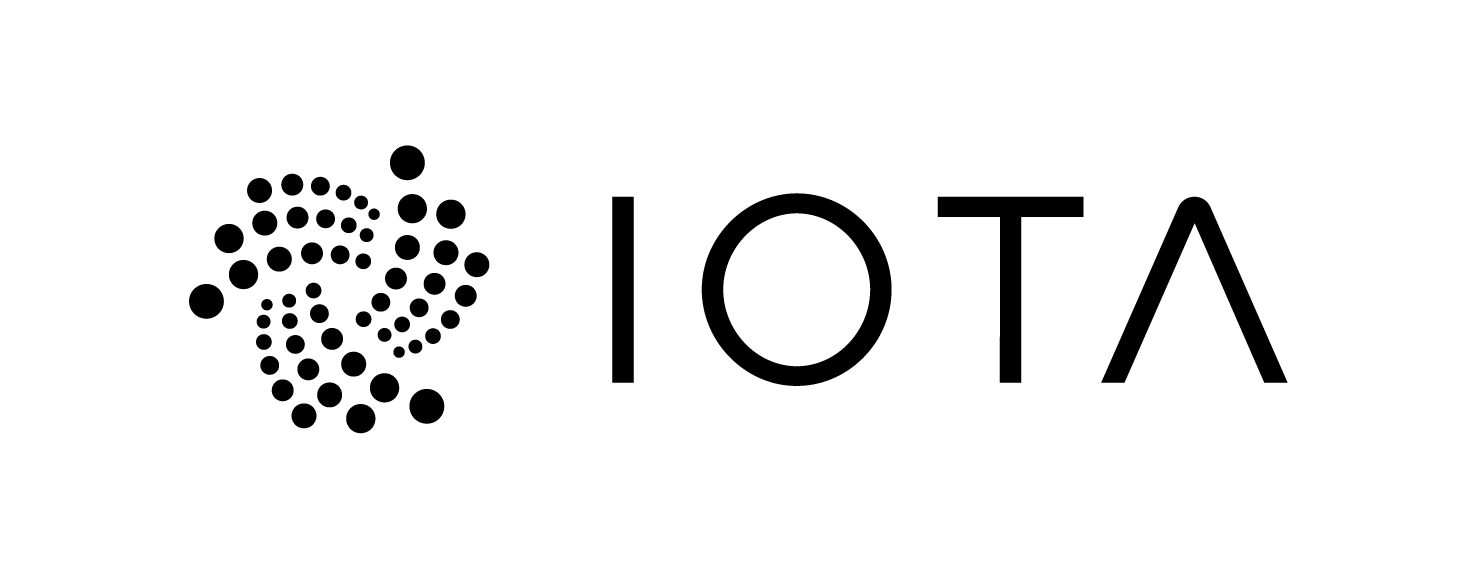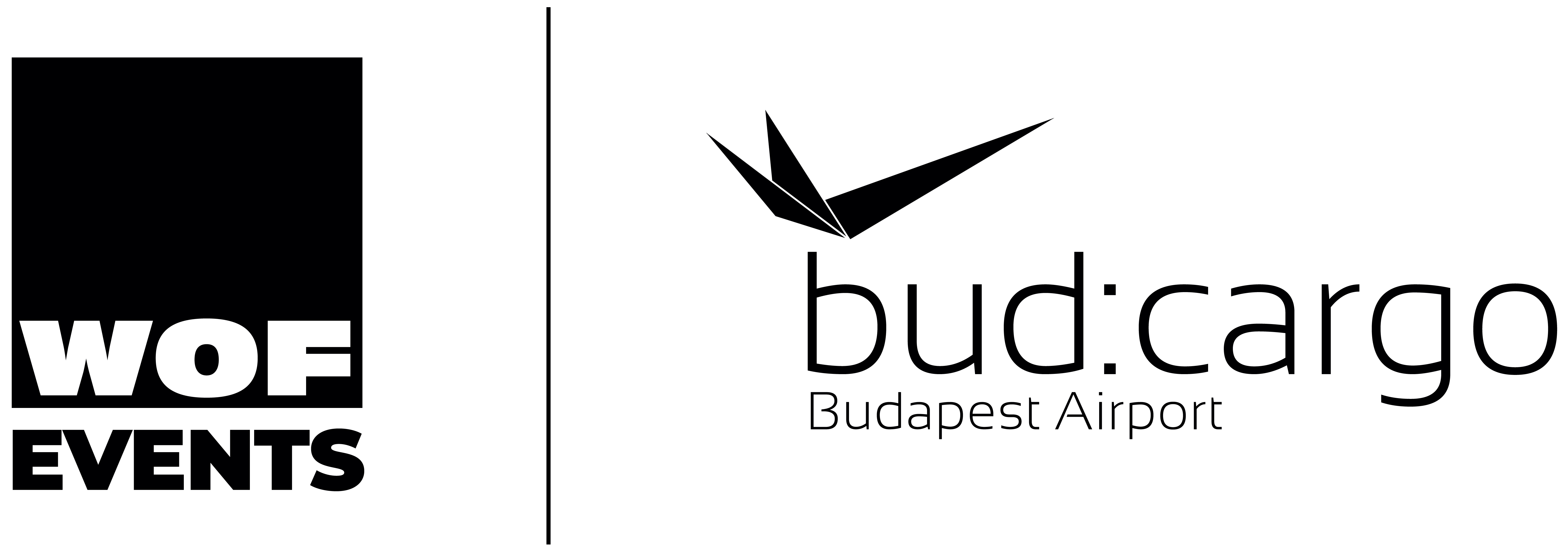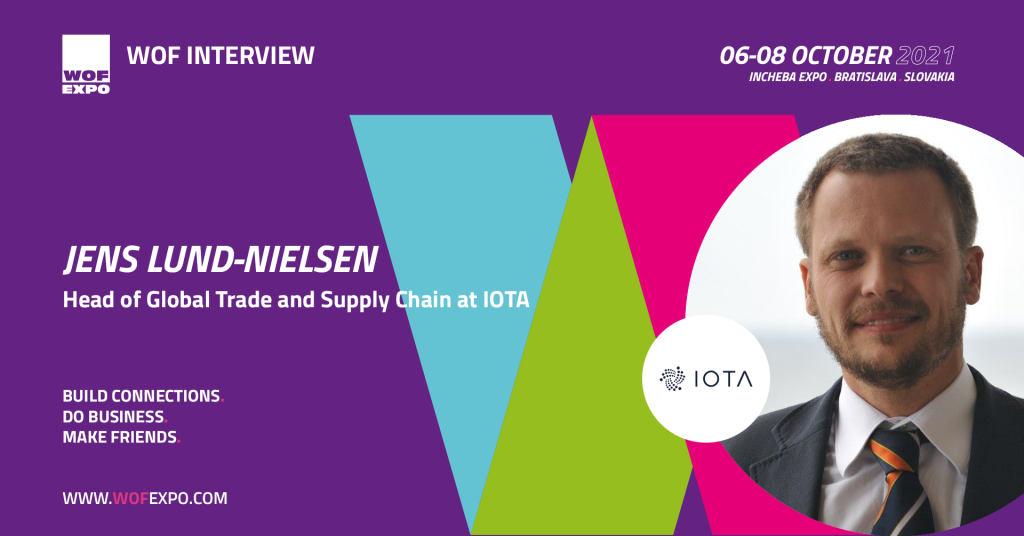Interview with Jens Lund-Nielsen
| Jens Munch Lund-Nielsen has built a life and career on bringing together different professional fields and sectors, thereby creating new types of partnerships— especially within the field of supply chains and global trade. For the last 8 years he has taken up different roles within A.P. Moller — Maersk including launching a new e-trade platform for Africa, forging a partnership with a large bank to develop financial trade services with focus on emerging markets, and co-founded a public-private partnership with focus on trade facilitation including five governments, the ICC and the World Economic Forum. Within the field of CSR, he has launched human rights initiatives and established a partnership with other logistic companies such as UPS and Agility supporting the UN World Food Programme to deliver a rapid response to large natural disasters around the world. Jens is currently working as the Head of Global Trade and Supply Chain at the IOTA Foundation. In addition to his educational background in civil engineering and philosophy, Jens also holds an MBA from INSEAD. Jens is a Danish national living in London with his family. |
| 1. What are the main disrupters for blockchain development? Well, I´d say that IOTA is the main disruptor in blockchain development. IOTA is of course not a blockchain but it operates instead on what we call the Tangle. I still use the word “blockchain” sometimes when I’m giving a talk, and it’s ok because it’s what people are familiar with. But the fact that IOTA is not a blockchain is precisely what allows it to be so disruptive. The Tangle is really the only technology around that could be used as a framework for IoT. That’s what it was actually designed to do, and of course, this level of connectivity has an incredible amount of complexity. The Tangle is able to handle the task quite elegantly because of two unique properties — the Tangle can be scaled globally to give nearly real-time feedback on the billions of transactions represented by IoT, and the Tangle is the only Distributed Ledger Technology (DLT) that does not charge any fees for transactions. The Tangle has the features of a blockchain but isn’t limited by blocks or a single chain. The disruptiveness is illustrated by the fact that we have more outside, third-party partners using IOTA technology for their own operations than any other DLT and these partners are filing more patents with IOTA technology than with any other DLT – blockchain or otherwise. 2. Tell us a little bit more about the DLT ecosystem and how it can improve the flow of information within the supply chain? When we talk about bringing DLTs into supply chain management, it’s important that we talk about the magnitude of improvement entailed here. This is not going to be some kind of series of efficiency tweaks and optimization work. Bringing supply chains into the 21st century through DLT, specifically IOTA´s technology is going to be a tectonic shift in several industries. We can only talk briefly about the overarching principles involved because of the scale of the topic. But we can first look at one example, which I’m sure will strike some fear into the hearts of the supply chain managers out there. I’m talking about risk. The entire principle of risk management right now is completely reactive and always one step behind. The best we can do is make forecasts based on prior performance, analyze the recent data, and put the entire transaction history into AI engines or other analytical tools. This will always have an important place and it’s fine so far as it goes. But where is the real-time data analysis? It doesn’t exist yet. What if you could check in with your tier-1 suppliers the moment that an issue arose? We’re talking about not only saving time and money here; this is also going to mean a fundamental shift in the way that lots of different people do their jobs. 3. What other kind of “tectonic” shifts do you anticipate? Well, the goal is to flip the whole industry around so that we are talking about demand chains. It’s a lovely concept and I certainly didn’t coin the phrase. But until now, the idea of demand chains has been pure fantasy. With DLTs built on IOTA’s frameworks, we can start to look with a clear vision at how we’re actually going to implement this. Up to this point, we are always working on forecasting demand, trying to figure out how much to stock, how much to ship. With the level of data transparency represented by DLTs, we can start analyzing and responding to real-time demand. Because of the amount of data that the Tangle can handle and all of the frameworks that IOTA is developing, capabilities like Identity, like Alvarium, Streams, Access… these are huge building blocks being finalized at IOTA right now, and the end result is going to be this massive transformation in how we understand data visualization. Just the sheer amount of data that will become not only available but usable, manageable, is going to transform these industries, so that ideas about “forecasting” demand will come to seem antiquated. 4. How is IOTA ensuring the data integrity, or so called “trusted internet”? One of the ways we do this is by reframing supply chain management as data management. We are no longer centered on the idea of goods moving around the world in boxes and shipping containers. We are focused on the movement of data. This can, of course, be a little scary when you start thinking about the penetrating gaze of anyone with access to this power, but it doesn’t have to be. In fact, with the implementations that IOTA is working on, we don’t have to trade security and privacy for data transparency. And that’s what we’re really talking about here is transparency — how to give people insight, literally, to look into these areas that used to be only shadows. And more importantly, how do we shine a light there without sacrificing security? These ideas behind “Trusted Internet” concepts share the same wishes as IOTA, but again they’ve existed mostly as fantasy. Let’s look at Alvarium, which is basically a data fabric that is going to bridge all these different operational silos in supply chain management. Alvarium is going to give players the ability to interact on the level of a measurable trust certification for data. Now combine this with the basic encryption principles behind the Tangle. Add in the “opt-in” standards and flexibility of IOTA’s Identity framework. We are talking about an extremely robust set of tools for securing the Internet of Value. The key for my understanding was that these different frameworks aren’t just add-ons to the basic structure of the Tangle, but rather, these things are actually giving structure to the entire IOTA project. 5. Do you have anything exciting in development right now? IOTA is a buzzing hive of development. I couldn’t possibly get into all of the things that we are working on right now. It’s a very busy time for us, but also a very exciting time in terms of seeing some of these years-long projects start to come to fruition with outside partners and real-world use-cases. In terms of supply chain management and the like, I am very excited to be working on projects with Zebra and IBCS, basically involving getting barcodes and RFID tags integrated with the Tangle and developing the certifications for these new technologies. All of us at IOTA have been putting in the groundwork for these kinds of collaborations to finally begin, and it’s humbling and also quite an honor to be working with these two titans right now. 6. What is your opinion about positioning WOF EXPO in Central and Eastern Europe region? That is fantastic! Bratislava is just a lovely city, and the people of Slovakia are so nice. So for personal reasons, I’m very excited to come to the expo in September. I’m keeping my fingers crossed. Obviously, there is a lot to sort out in terms of getting these vaccines rolled out. We need to focus on making sure we are getting everyone healthy, but hopefully, soon we can get back to these kinds of in-person trade fairs. It makes sense as well to have this expo precisely where we can build bridges between Eastern and Western Europe, so my fingers are firmly crossed here. |
 | IOTA is a global not-for-profit foundation incorporated and headquartered in Germany. The IOTA Foundation’s mission is to support the research and development of new distributed ledger technologies (DLT), including the IOTA Tangle. The Foundation encourages the education and adoption of DLTs through the creation of ecosystems and the standardization of these new protocols. The IOTA Tangle moves beyond blockchain by providing the world’s first scalable, feeless and fully-decentralized distributed ledger technology. The Tangle uses its own unique technology to solve three fundamental problems with blockchain technology: high fees, scaling and centralization. It is an open-source protocol connecting the human economy with the machine economy by facilitating novel Machine-to-Machine (M2M) interactions, including secure data transfer, fee-less micropayments, and secure access control for devices.
www.iota.org |

